In a study led by Ko and colleagues at the Department of Dental Materials, School of Dentistry, Kyung Hee University, Korea, researchers armed graphene QDs with two therapeutic moieties: a HER-targeting antibody meant to help the therapeutic QDs find HER2-expressing breast cancer cells; and doxorubicin (DOX) – a chemotherapeutic drug used widely in treating breast cancer.
Consistent with previously established criteria (size, shape etc.) for drug carriers, the current study found that the estimated size of 222 nm makes the nanocarriers good candidates for further development toward diagnostic and therapeutic applications. Further, the nanocarriers had excitation and emission wavelengths of 370 nm and 450 nm respectively, making them glow in the ultraviolet range and as a result, optimal for medical imaging applications. The research team showed through chemical binding analysis that anti-HER antibodies were firmly bound to the QDs, and that the QDs were hydrophilic. The team conducted thermal stability studies and showed that the nanocarriers were stable at temperature ranges much greater than the physiological body temperature range.
The study also analyzed whether the therapeutic nanocarriers were able to specifically target and enter breast cancer cells, release the DOX payload under specific pH and temperature conditions, and subsequently induce breast cancer cell death. Using a HER2-expressing breast cancer cell line, the team showed that the nanocarriers could kill cells in a dose dependent manner. A temperature of 37oC and pH of 5.5 were optimal for DOX release. Results in fluorescent microscopy studies suggested that DOX was released immediately after the nanocarriers entered HER2-expressing cells.
This study proposes that graphene-based QDs, when armed with anti-HER antibodies and DOX, have great potential for translation. In addition, with biomarker-based treatment decisions entering clinical practice in oncology settings, QD-based therapeutic nanocarriers are likely to have a notable impact on cancer therapy.
Read the full article here:
Graphene quantum dot-based theranostic agents for active targeting of breast cancer
N. R. Ko, M. Nafiujjaman, J. S. Lee, H.-N. Lim,a Y.-k. Lee and I. K. Kwon


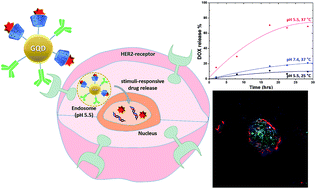









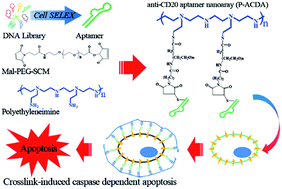
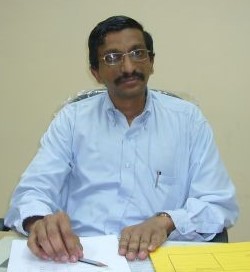


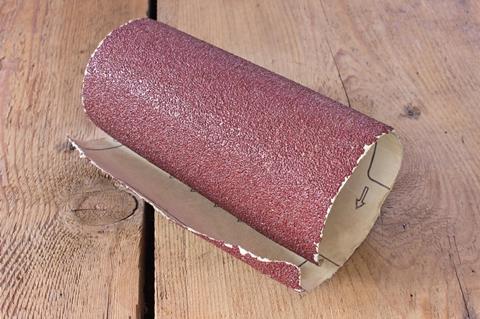
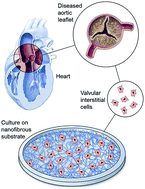 Within the body, VICs are arranged as monolayer sheets, forming a veneer on the outer surfaces of heart valve leaflets. They form this complex structure by depositing collagen – a cellular cementing protein that allows cells to interlock like a cobblestone path to form a sheet-like structure. The researchers reasoned that by artificially simulating conditions ideal for VIC growth within the body, they could create VIC sheets in the laboratory and examine their similarity to naturally occurring VICs in heart valve leaflets.
Within the body, VICs are arranged as monolayer sheets, forming a veneer on the outer surfaces of heart valve leaflets. They form this complex structure by depositing collagen – a cellular cementing protein that allows cells to interlock like a cobblestone path to form a sheet-like structure. The researchers reasoned that by artificially simulating conditions ideal for VIC growth within the body, they could create VIC sheets in the laboratory and examine their similarity to naturally occurring VICs in heart valve leaflets. To determine the effect of the hybrid drugs on cancer cell survival, the research team tested the drug’s ability to halt the growth of three cell types exhibiting features of leukemia, kidney cancer and prostate cancer respectively. They found that all drugs in the series were toxic to cancer cells, with leukemia and kidney cancer cells showing the greatest degree of sensitivity to the hybrid drugs.
To determine the effect of the hybrid drugs on cancer cell survival, the research team tested the drug’s ability to halt the growth of three cell types exhibiting features of leukemia, kidney cancer and prostate cancer respectively. They found that all drugs in the series were toxic to cancer cells, with leukemia and kidney cancer cells showing the greatest degree of sensitivity to the hybrid drugs.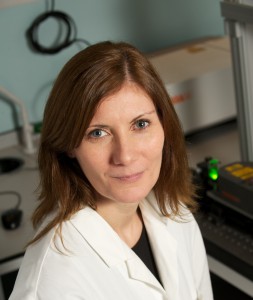
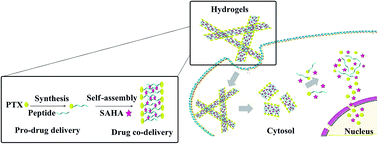 The researchers loaded PTX and SAHA onto the same nano-carrier in the following sequence: (1) an amino acid-based self assembling hydrogel precursor (Nap) was prepared, (2) PTX was conjugated to the self assembling hydrogel to form a pro-drug and (3) the pro-drug was allowed to encapsulate SAHA, forming the final drug (Nap-PTX-SAHA). The researchers subsequently characterized the mechanical features of their novel drug delivery system and tested it using a mouse model of liver cancer.
The researchers loaded PTX and SAHA onto the same nano-carrier in the following sequence: (1) an amino acid-based self assembling hydrogel precursor (Nap) was prepared, (2) PTX was conjugated to the self assembling hydrogel to form a pro-drug and (3) the pro-drug was allowed to encapsulate SAHA, forming the final drug (Nap-PTX-SAHA). The researchers subsequently characterized the mechanical features of their novel drug delivery system and tested it using a mouse model of liver cancer.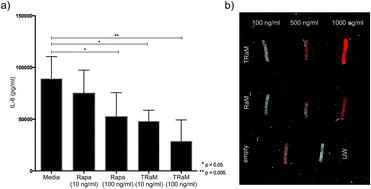 Their studies showed that the rapamycin-loaded nanoparticles were stable and biocompatible when tested in human endothelial cells. Further, the rapamycin release could be controlled by adjusting the pH values lower than 7 or higher than 8. The study found that the micelles were being taken up by cells within 6h after incubation. The study also demonstrates the specificity of the micelles by showing that what the cells were pre-treated with an integrin inhibitor, they were less likely to take up the micelles.
Their studies showed that the rapamycin-loaded nanoparticles were stable and biocompatible when tested in human endothelial cells. Further, the rapamycin release could be controlled by adjusting the pH values lower than 7 or higher than 8. The study found that the micelles were being taken up by cells within 6h after incubation. The study also demonstrates the specificity of the micelles by showing that what the cells were pre-treated with an integrin inhibitor, they were less likely to take up the micelles.